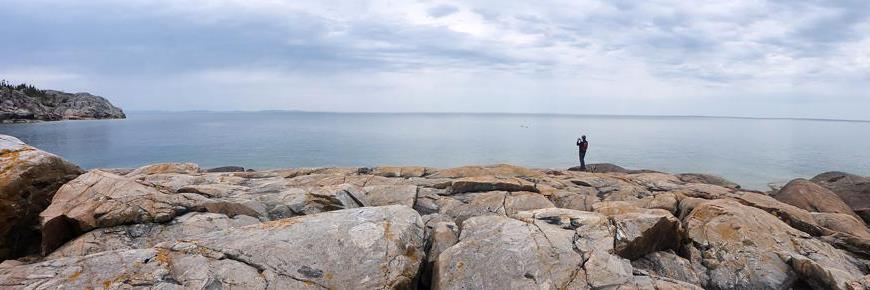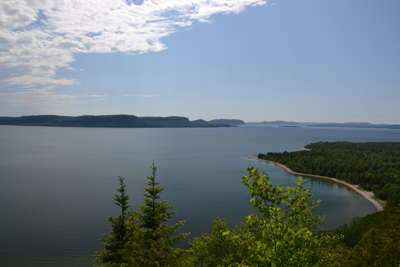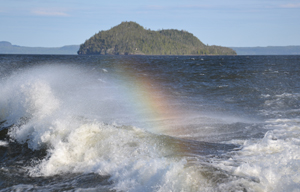
Why a national marine conservation area at the top of Lake Superior?
Lake Superior National Marine Conservation Area
 Breathtaking view of Nipigon Bay from the Kama Lookout
Breathtaking view of Nipigon Bay from the Kama Lookout © Parks Canada
By Sylvio (Hoss) Pelletier
I asked myself that question many times while participating in various open houses and information sessions prior to working with Parks Canada. Eventually I came to understand the social and economic benefits to our region from having a national marine conservation area established in our backyard.
As a proud resident of north-western Ontario I feel fortunate to live in surroundings with absolutely breathtaking vistas and resources so grand and clean as to make the rest of the world envious (if only the world knew we existed). I believe Parks Canada’s internationally recognized brand and the label of “world’s largest freshwater protected area” will change our region’s anonymity.
Parks Canada produced an eye-catching publication about the National Marine Conservation Areas of Canada, which really helped me understand the reasons for and benefits of marine protected areas. I would like to share with you some key points from the booklet to outline what Canada’s national marine conservation areas are about.
In Canada, water defines our borders. It is part of our past, our present and our future and it represents a Canadian way of life.
Our nation has the longest coastline in the world, extending along the Atlantic, Pacific and Arctic Oceans. Canada also borders the largest system of fresh water on earth: the Great Lakes. These marine environments are an integral part of our natural and cultural heritage.
 Burnt Island rainbows
Burnt Island rainbows © Parks Canada
Healthy marine environments are essential to:
- The survival of marine species and ecosystems
- Our transport, trade and communication channels
- Our fishing and tourism industries
- The Aboriginal peoples of Canada
- Our coastal communities
Parks Canada works in close collaboration with coastal communities, anglers, industry, the general public and Aboriginal peoples to establish and manage national marine conservation areas.
Twenty-nine (29) distinct marine regions have been identified in Canada. Ideally, each of these will one day host a national marine conservation area.
- 5 in the Pacific Ocean
- 9 in the Arctic Ocean
- 10 in the Atlantic Ocean
- 5 in the Great Lakes
The National Marine Conservation Areas of Canada:
- Provide opportunities for the people of Canada and of the world to appreciate and enjoy our marine heritage;
- Recognize that the conservation of the marine environment is fundamental to the social, cultural and economic well-being of people living in coastal communities;
- Provide opportunities for the ecologically sustainable use of marine resources; and
- Promote an understanding of Canada’s marine environment.
I hope the information which helped me understand the proposed Lake Superior National Marine Conservation Area helps you as well, as Parks Canada moves toward the creation of this special protected area.
Parks Canada has compiled answers to frequently asked questions regarding the soon to be established Lake Superior National Marine Conservation Area. Covered are topics such as traditional activities, fees, processes and tourism.
- Date modified :